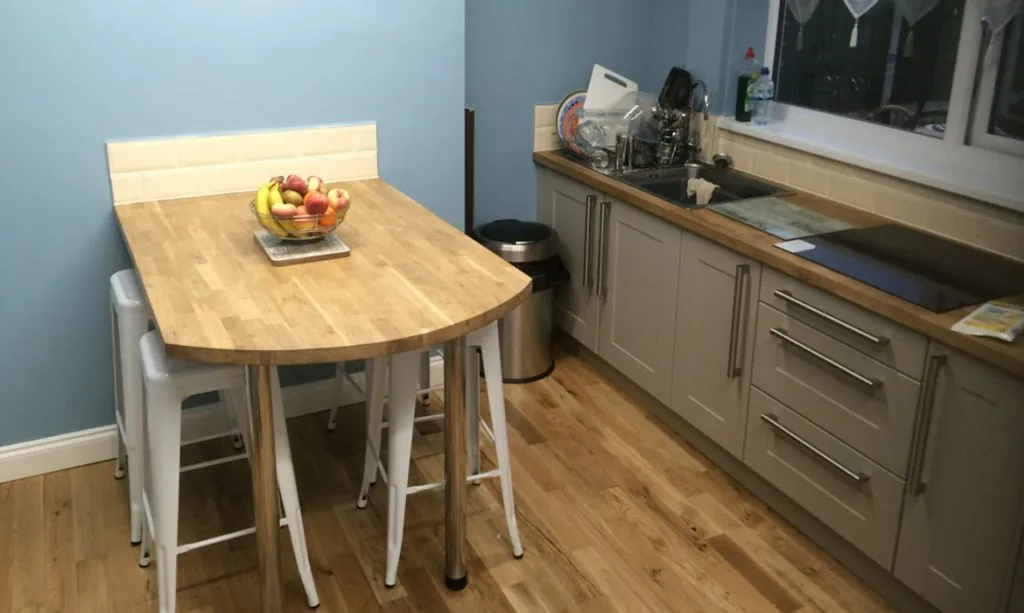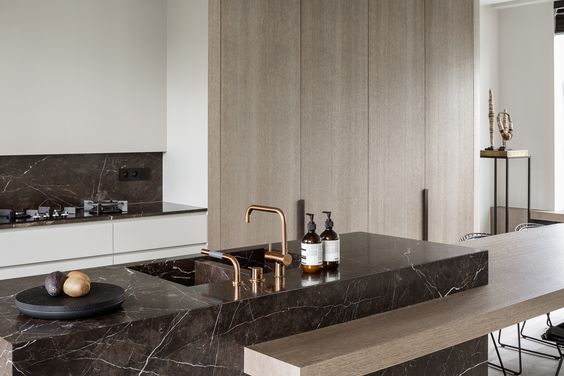Introduction
Planning a kitchen renovation in the UK can feel overwhelming. With so many decisions to make and a wide range of costs involved, it is easy to lose track. The secret to a smooth renovation is clear planning. Without it, you risk overspending, delays, or ending up with a kitchen that does not suit your lifestyle. This guide will walk you step by step through the entire process, from assessing your current kitchen to adding the finishing touches.
Step 1 – Assess Your Current Kitchen
Before making any decisions, take a close look at your existing kitchen. Ask yourself: what works, and what drives you mad? Is the layout impractical? Do you struggle with storage? Does the space feel dark and cramped? By identifying weaknesses, you can prioritise improvements and avoid wasting money on things that do not need changing.
Step 2 – Set Your Renovation Goals
Think about what you want to achieve. Is this a full structural renovation with walls knocked down, or are you simply updating cabinets and worktops? Decide whether function, style, or resale value is your top priority. This will shape your entire project and keep your choices focused.
Step 3 – Establish a Realistic Budget
Budgeting is often the hardest part. In the UK, a basic kitchen renovation may start around £5,000, while high-end projects can exceed £30,000. Always allow at least 10 to 15 per cent extra for unexpected expenses like plumbing or electrics. Being realistic prevents disappointment and financial stress.
Step 4 – Research and Collect Inspiration
Gather inspiration from magazines, Pinterest boards, and kitchen showrooms. Take note of layouts, colours, and finishes you love. Always consider your lifestyle. A family of four may need durable surfaces and ample storage, while a city flat may prioritise style and compact design.
Step 5 – Choose a Renovation Style
Popular styles in the UK include modern sleek kitchens, classic shaker styles, and rustic farmhouse designs. Your choice should reflect your taste but also the character of your home. For example, a Victorian terrace may suit a shaker kitchen better than a futuristic minimalist design.
Step 6 – Measure Your Space
Accurate measurements are crucial. Write down every dimension of your kitchen, including ceiling height and window placement. Mistakes here can cost thousands if appliances or cabinets do not fit properly. Many kitchen suppliers in the UK offer free measuring services to avoid errors.
Step 7 – Plan the Layout
The layout decides how practical your kitchen will be. The traditional “work triangle” rule ensures the sink, cooker, and fridge are positioned for efficiency. You might prefer an open-plan kitchen for entertaining, or a U-shaped layout for maximum storage. Think about how you use your kitchen daily.
Step 8 – Select Materials and Finishes
Your choice of materials will impact durability and aesthetics. For worktops, granite and quartz are long-lasting, while Corian offers seamless finishes. Cabinets can be matte for a modern look or gloss for a brighter finish. Flooring options like tiles or vinyl offer practicality in high-traffic areas.
Step 9 – Focus on Storage Solutions
Storage makes or breaks a kitchen. Clever solutions include pull-out shelves, deep drawers, and carousel units for awkward corners. For small kitchens, tall cabinets that reach the ceiling are ideal. Think vertically to maximise every inch of space.
Step 10 – Lighting Design
Lighting sets the mood and improves functionality. Use task lighting under cabinets for food prep, ambient lighting for general brightness, and accent lighting for style. Energy-efficient LED lights are cost-effective and eco-friendly, making them perfect for UK households.
Step 11 – Appliances and Smart Technology
Choosing appliances is not just about looks. Opt for energy-efficient A-rated models to save on bills. Smart fridges, ovens, and taps are becoming popular in UK homes, making life easier and kitchens more futuristic.
Step 12 – Hire Professionals or DIY
Decide whether you want to take on the renovation yourself or hire professionals. DIY can save money but can also cause costly mistakes. If hiring a fitter, check online reviews, ask for recommendations, and get multiple quotes. Trust is key when allowing someone into your home.
Step 13 – Legal and Practical Considerations
In most cases, a kitchen renovation does not require planning permission unless you are moving walls or changing the building’s structure. However, electrical and plumbing work must meet UK building regulations. Also, arrange proper waste disposal to stay compliant with local council rules.
Step 14 – Timeline and Project Management
On average, a kitchen renovation in the UK takes three to six weeks, depending on scale. Create a timeline with milestones for demolition, installation, and finishing touches. Staying organised helps you avoid delays and keeps costs under control.
Step 15 – Final Touches and Styling
Once the main work is done, add personality through paint colours, decor, and accessories. Plants, pendant lights, and open shelving can instantly make a kitchen feel more welcoming. This is where you turn a functional space into the heart of your home.
Conclusion
A successful kitchen renovation comes down to planning. By following these steps, from budgeting and measuring to layout and styling, you can create a kitchen that is both practical and beautiful. With careful thought and the right professionals, your dream kitchen is well within reach.
FAQs
1. How much does a kitchen renovation cost in the UK in 2025?
Costs range from £5,000 for basic updates to over £30,000 for high-end kitchens.
2. Do I need planning permission for a kitchen renovation?
Not usually, unless structural changes are involved. Electrical and plumbing work must meet regulations.
3. How long does it take to renovate a kitchen?
Between three and six weeks, depending on the scale of the project.
4. What is the most durable kitchen worktop?
Quartz and granite are considered the most durable, though Corian offers seamless options.
5. Can I renovate my kitchen on a budget?
Yes, by choosing cost-effective materials, reusing cabinets, and doing small updates like lighting or paint.

